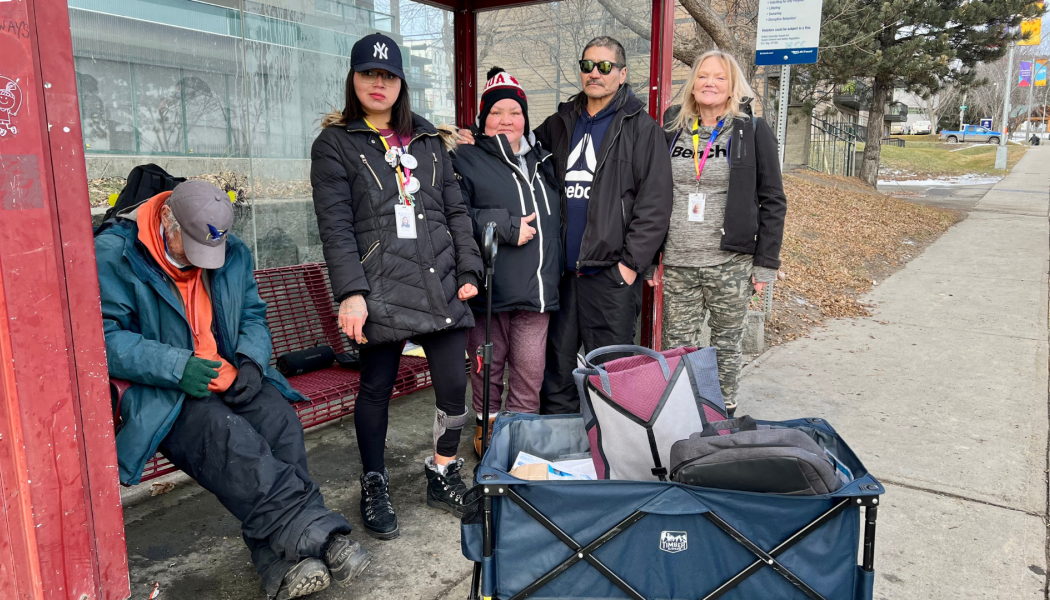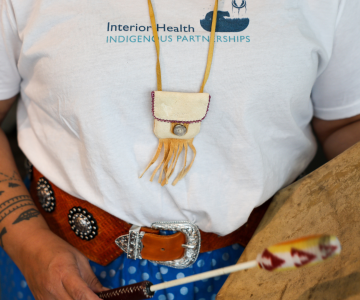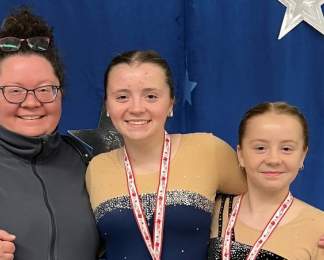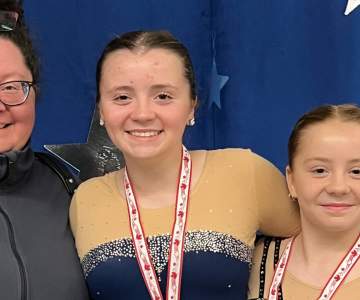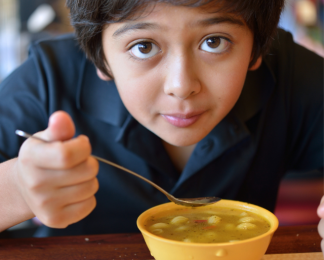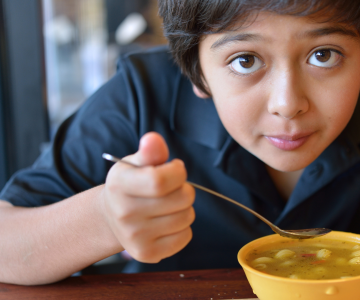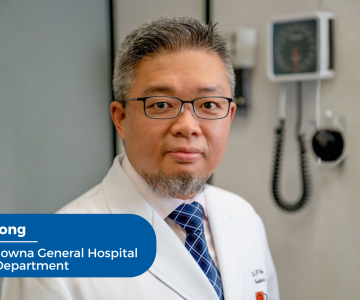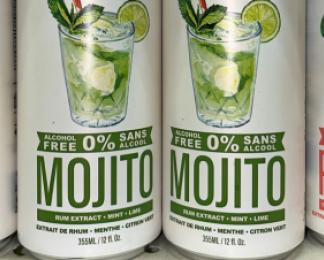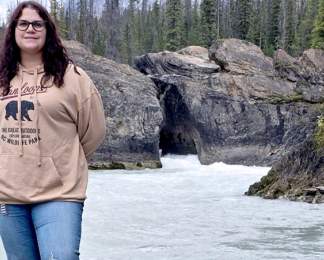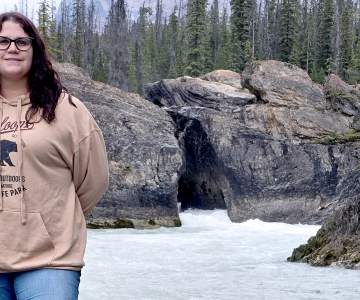Street outreach Peer Volunteer Nova-Lee Dixon and her colleague Kelly cross the intersection of Oliver Street and Fourth Avenue as they make their rounds in downtown Williams Lake on a chilly winter morning.
Pulling a small blue wagon, they head towards the nearby bus stop across from a local grocery store where a handful of people sit and mingle, bundled up trying to stay warm. The group awaits the approaching Peer Volunteers and it’s clear the visit is welcomed.
“We’re their bridge to a better life. We are their cheering squad,” Kelly explains, referring to the cycle of addiction.
People who have personal experience with substance use and recovery – referred to as Peers - are playing an increasing role in the planning and delivery of services across Interior Health (IH).
Nova-Lee says they have spoken with many people who regularly use substances and who are trying to quit or find treatment options. For now, though, their goal is to meet people where they’re at and support them in whatever that looks like at the time.
“We were there in that position. That is why I always tell people, ‘I’m in no place to judge anyone for where they’re at, because I was there too,’” says Nova-Lee. “I was that person not too long ago.”
When the Peer Volunteers reach the bus stop, they are greeted warmly as they offer essentials for surviving on the cold northern streets such as bottles of water, hand warmers, granola bars, fruit cups, garbage bags for sitting on to keep dry, feminine hygiene products, gloves, socks and naloxone, a medication used to reverse the effects of opioids in the event of an overdose. The group gratefully takes everything that is offered.
One man jokes with Kelly, responding with “your number” when she asks if there’s anything else he needs. Everyone laughs as the sounds of Bruce Springsteen and Johnny Cash come from a small portable speaker nearby. The Peers smile as they hand out more products, such as Kleenex®, Band-Aids® and harm reduction supplies.
“I love what they do for us because we need it when we are outside after leaving the shelter. We always need stuff for during the day to keep warm, and they give us water,” says one woman named Gwen.
“And they are so kind and so generous,” adds her partner, Dale. “They tell us about their groups and how they want to help us out. It’s awesome.”
Gwen and Dale say they’re waiting and hoping to get treatment somewhere together.

Before Kelly and Nova-Lee move along, they offer people pamphlets containing information about local supports that are available. Then they head back to the nearby IH office on Borland Street where Sarah De Meda, the Peer coordinator overseeing the Williams Lake Peer program, is there to support them.
Building connections in the community
For the last 10 months Sarah has been working to get the Peer program set up in Williams Lake by recruiting and working with the Peer Volunteers to provide that street-level outreach and connection as a bridge to resources for those in need.
“There are a lot of barriers to accessing support, but if you have someone you can talk to it can be easier. They see the Peers and know there is hope.”
Funding for the Peer program is part of the provincial government’s response to the toxic drug crisis faced by communities, both large and small, since it was declared a public health emergency in 2016. The toxic drug emergency has been responsible for 2,416 lives lost within the IH region alone in the last nine years, with toxic drugs now the leading cause of death for people aged 10-59 in B.C.
Jenny Lindstrom, the integrated community care coordinator in Williams Lake, said the Peer program is one of the important pieces of work being done at the street level to reach those at risk.
“Being a clinical person, it’s really helpful for me knowing that feeling of safety is being created by the Peers. They bring such a special energy to their work with people that I can’t do in my role,” Jenny explains of the critical services the Peer Volunteers provide.
“That Peer role is so much about advocacy and support and helping people find the right way to their own recovery, whatever that looks like. The value of that is so tremendous when I look at it from a health-care perspective and being able to access spaces that we wouldn’t be able to normally access and touch people’s hearts in ways that we can’t.”
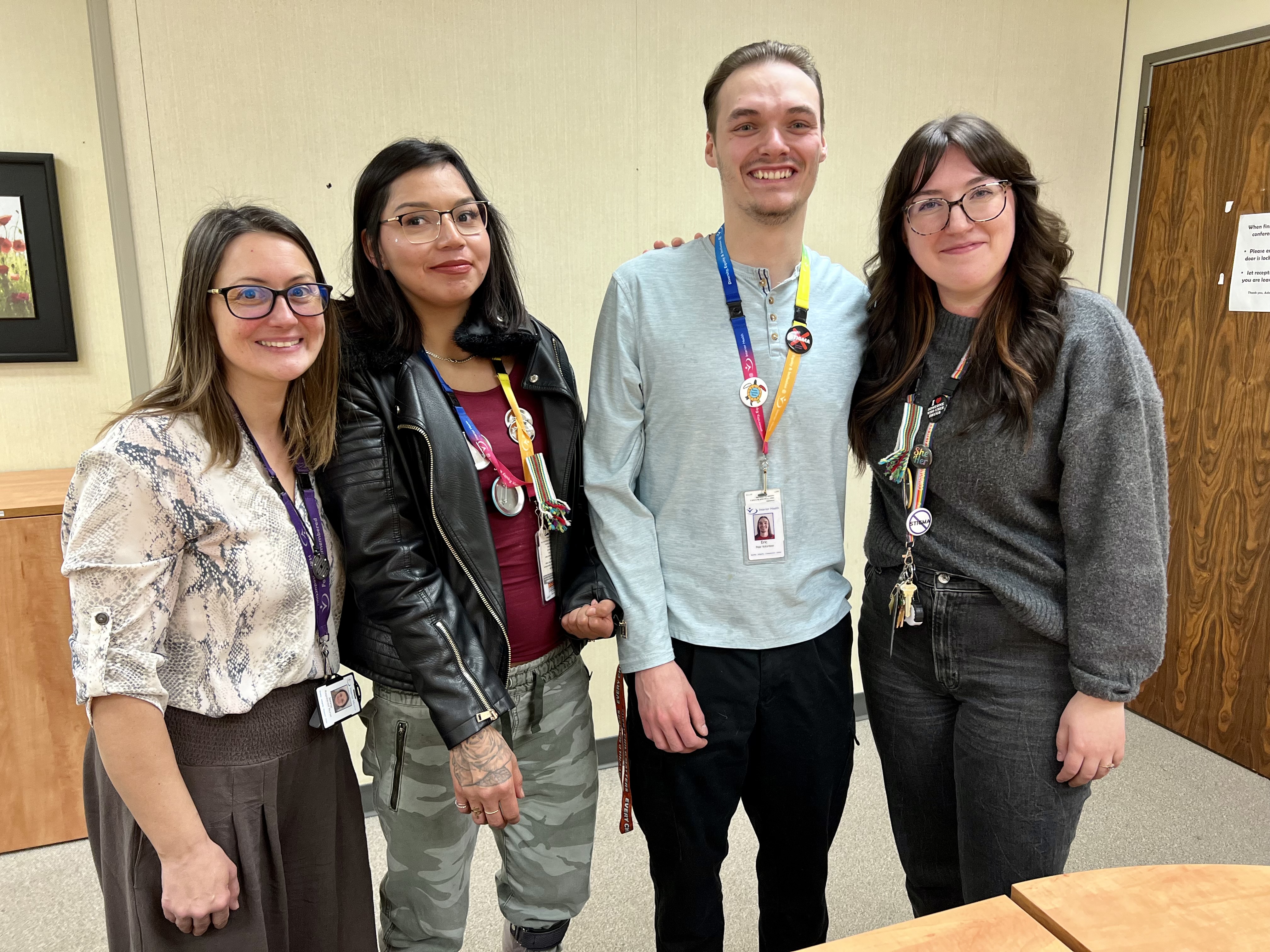
Williams Lake currently has about a half dozen Peer Volunteers with lived experiences who spend time on the streets Mondays, Tuesdays and Thursdays.
“They are reaching people on levels that we don’t reach and being able to advocate back to us what people actually need and want.”
Sarah adds that Peer Volunteers decrease barriers to services by educating health-care providers on how to provide better services for clients.
“They are bridging the connection between us as a health system/institution and our clients, the community,” says Sarah, adding there are about a dozen “harm reduction heroes” who create kits for distribution as well as a diverse team of Peer Volunteers, such as Kelly, Nova-Lee and Eric McAfee who all do street-level outreach.
“These guys are literally saving lives. We had a team a couple weeks ago respond to an opioid poisoning and help the person out,” says Sarah. “That’s the evidence of this being such an important program. The value of this program is the connections these guys are building. I think they are incredible.”
Kelly’s story
Kelly took the first shift with Nova-Lee to kick off the Peer program in Williams Lake about 10 months ago. She has personally saved one life in her time with the program by administering naloxone to someone overdosing.
“We were doing our rounds and we were at the Salvation Army and somebody came to us and said, ‘There’s a dead man around the corner,’” Kelly recalls. “His eyes were wide open, his colour was black and purple. Another person said she used to be a nurse, but hard times had led her to the streets. She started doing mouth-to-mouth. It took four vials to bring this person back. Not one, four.”
Kelly said after she administered the fourth injectable dose of naloxone, the person woke up and sat up as they waited for the ambulance to arrive.
The experience left Kelly feeling empowered, and thankful for having naloxone on hand.
“We’re handing out a lot of naloxone and that’s keeping the deaths at bay. There’s a lot of people being saved with the naloxone. It’s wonderful.”
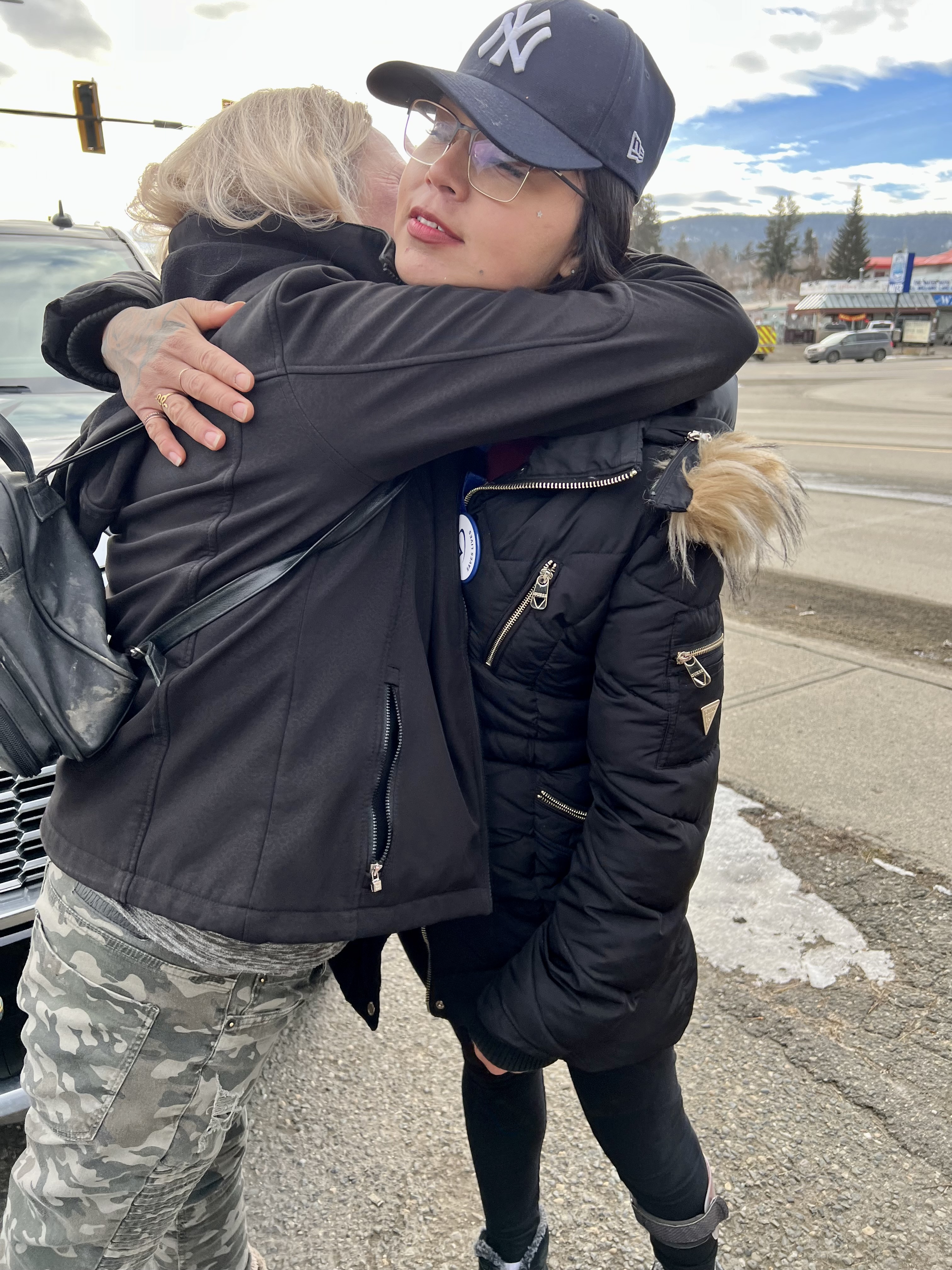
Her lived experience has made her want to be a Peer Volunteer.
“I spent 20 years in drug addiction. I used every day, all day. I did whatever it took to get what I needed. I went from owning a restaurant on Vancouver Island to nothing. And I got very sick on the streets.”
“Fentanyl was just coming into play when I was getting off drugs, otherwise, I would be dead. That’s why I do this because it’s not their fault. The fentanyl that has gone into the drugs and has made it impossible to quit. It’s the nature of the drug. You’ve got to do more and more.”
Kelly has her life back now and says she understands that a life as a person who uses drugs is a hard one.
“I know what they’re going through, 100 per cent, and people walking by and just turning their backs or looking away because of what they do, that is not the way to deal with it, not at all. It takes love, heart, compassion,” Kelly says, shedding a tear. “I do it for that reason, and I love them, and they deserve to be helped.”
Eric McAfee’s story
Eric McAfee has been a peer support volunteer in Williams Lake for about seven months and is part of the team who reaches out to people experiencing homelessness.
He’s passionate about helping those who struggle on the streets. He took the day treatment program for harm reduction offered at Foundry Cariboo Chilcotin in Williams Lake due to his own struggles with alcohol and cannabis use.
“When I was in my usage, I was very much a functional addict. It was very much in private. I was home. I was alone. No one really knew I was struggling until it was physically showing on me. That’s when it kind of clicked. People were wondering, ‘Eric what is going on at home?’ I wasn’t showing up to work.”
He describes being a peer volunteer as an eye-opening experience.
“I guess I am a little ashamed to admit it is something I didn’t realize was as prominent in Williams Lake until I started doing outreach. Ever since then, honestly, I’ve been loving it. It’s so nice to go out and hear a lot of these people’s stories and experiences. It’s so nice to see familiar faces as you go out more and more often. They are all so friendly.”
Eric feels Peer Volunteers have had a positive impact on those they are trying to help.
“We get a lot of thank-yous. They are very grateful for what we offer. Sometimes they will give us a heads up if there are a lot of people experiencing overdoses. They’ll give us a general idea of areas to check out on our route. They’re very trusting of us.”
Some of the clientele that Eric sees are younger, like him, and often people he went to school with.
“That was definitely a shock of reality for me. That tells me these types of situations can happen to anybody and at any point in their lives—no matter if they want it to happen, if they were willing to have it happen or if they were ready for it.”
He encourages people to check in with family and friends.
“Ask the hard questions. Sit down and have the conversations that aren’t the most pleasant to have because a lot of the time that will really open the door to more trust, to actually getting people that may be struggling with substance use or mental health or whatever their issues may be, to express what’s going on. ‘Are you OK?’ A question as simple as that may that get people to crack right open.”
Like many of the Peer Volunteers, Eric urges people to reduce the stigma associated with substance use and have compassion for others.
“Compassion is a beautiful thing.”
Nova-Lee Dixon’s story
Nova-Lee is soft spoken, but there is no mistaking the power and wisdom in her words.
At 29-years-old, she has been drug-free for seven years now following a heroin addiction that almost claimed her life.
“I should have been dead, and my stroke is what saved me from dying,” says Nova-Lee. “I ended up having a stroke from shooting needles and was hospitalized. I had to take a look at my life back then and decide if I wanted to go back to the street and just survive or…you know. My family was really scared, and I looked at them and I wanted to be better, so I decided to stop using. Maintaining my sobriety has been the best decision I have ever made.”
Nova-Lee attributes her lived experience with being more compassionate and wanting to give back to the community and help others by being a Peer Volunteer.
The challenging work has given her a new perspective on the reasons behind why many people are struggling on the streets.
“A lot of people think they are out there because they want to, but it’s not true. A lot of people I have encountered have stories of a hard life and, you know, some people just don’t know how to cope any other way than how they are doing it. That’s just the reality of that. People should be more understanding.”
Nova-Lee says one of the more challenging aspects of being a Peer Volunteer has been her own reaction to providing harm reduction supplies, something that has surprised her.
“As an addict beforehand, it was weird for me. I kind of felt uncomfortable, like I was contributing or enabling in a way. I had to talk to my boss and ask, how do you navigate this way of thinking? I didn’t like feeling responsible, but I just came to understand that people have the right to live a high-risk life and I’m just giving them safe tools to use with, so they don’t add to that risk.”
For Nova-Lee, avoiding difficulties in her own past led her into substance use at a young age.
“Sooner or later it just kind of bubbles up and turns into something else and you just have to address it. Being a parent, being a Peer Volunteer and the tools I have now, I can see in hindsight that I wasn’t using the best coping mechanisms. I was avoiding parts of myself and I just needed to allow myself to heal emotionally and physically.”
A proud mom of two girls, Nova-Lee now works two jobs, attends school and is also taking courses at Thompson Rivers University.
Her advice to others: “If they are young, I’d say just don’t grow up so fast, you know? It’s not that fun being an adult. And maintain that love and connection with your family and with things you like doing. And stay in school.”
Seeing hope in Peer Volunteers
“A lot of amazing, talented people are dying, and people that are lost and forgotten, and so the things that I strive for within our programs is to find the people that are in the cracks,” says Jenny of IH.
“We need to find access to those people and do as much education as we can to decrease the harm. There has been a lot of needless deaths. We’ve lost, just from our youth programs, we’ve lost a few and it’s been really challenging for the staff and for the community members and for the families.”
Jenny admits the work her team does is often heavy but, like the people they serve, she sees hope in the Peer Volunteers.
“A lot of us go into health care because we want to fix people. Peers remind us that people are where they’re at and they’re just as valuable where they’re at. And it’s just that constant checking of ego,” she says.
“The Peers that we have in all our programs allow us to hear the voices of the parents, the families, the people experiencing addiction. We cannot properly provide health care, whatever that might look like, without that voice. So, I’m humbled by their work.”
Sarah says the work has her pausing and reflecting on her own privilege regularly, and she is thankful to be part of the Peer team.
“I’ve learned so much in the last 10 months, from Nova-Lee and Eric, from our team, from the feedback they’ve provided. I’m an occupational therapist by trade but this shows the value of connection and again really meeting people where they are at. Looking beyond the clinical, because that’s how we heal.”
Learn more about what it means to be a part of the Mental Health and Substance Use Peer Engagement & Inclusion team and how to apply to be a Peer Volunteer or Peer Advisor.


